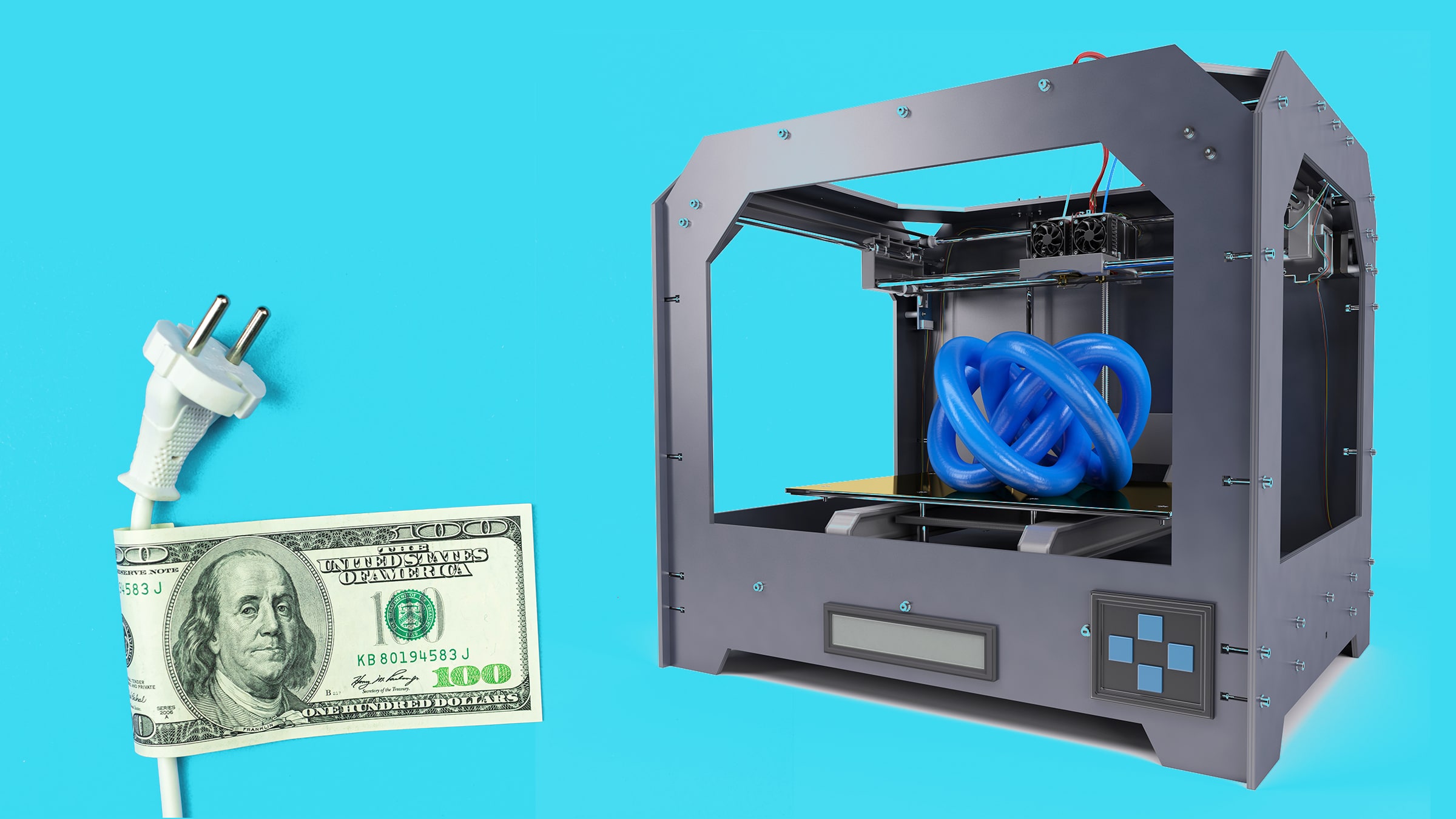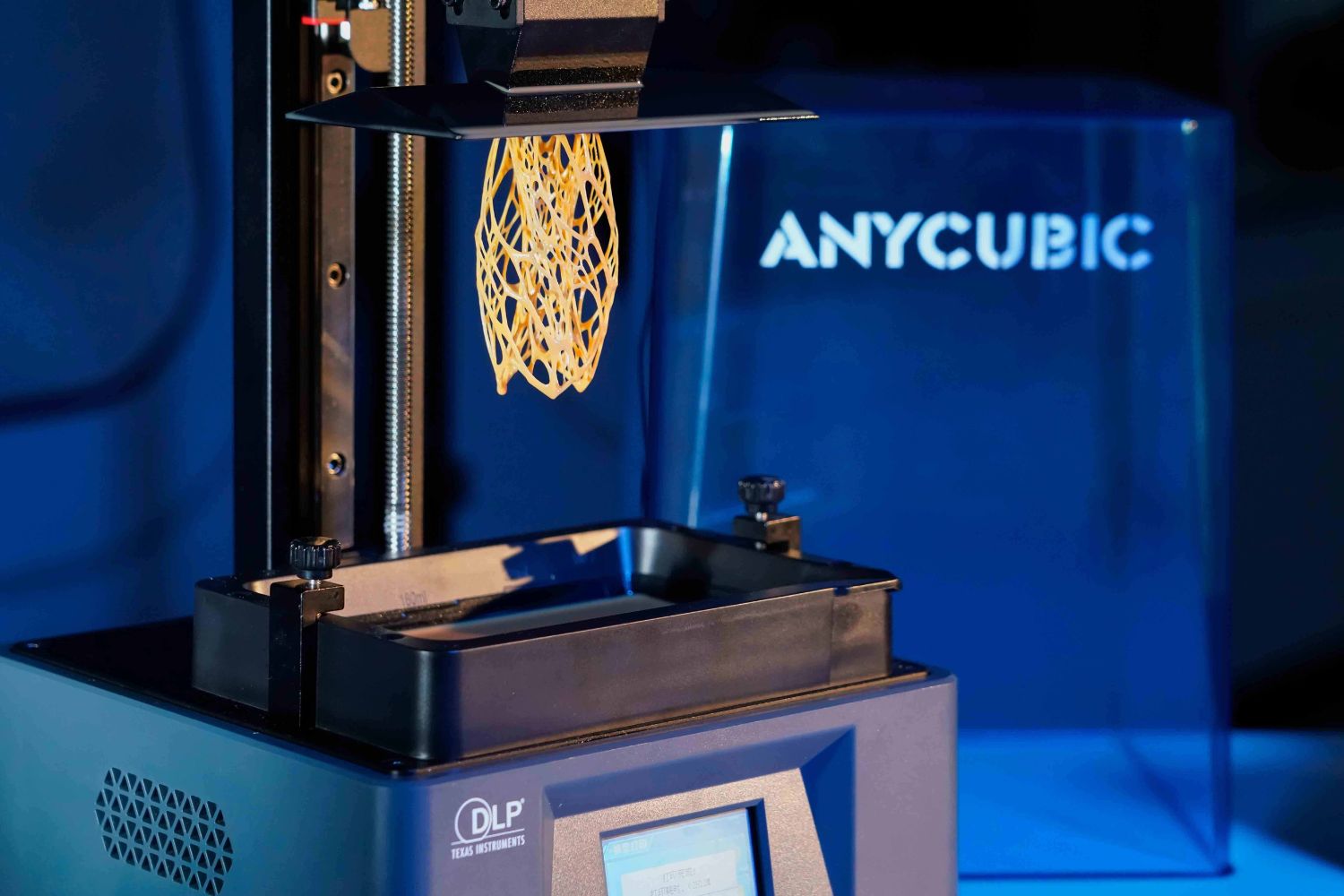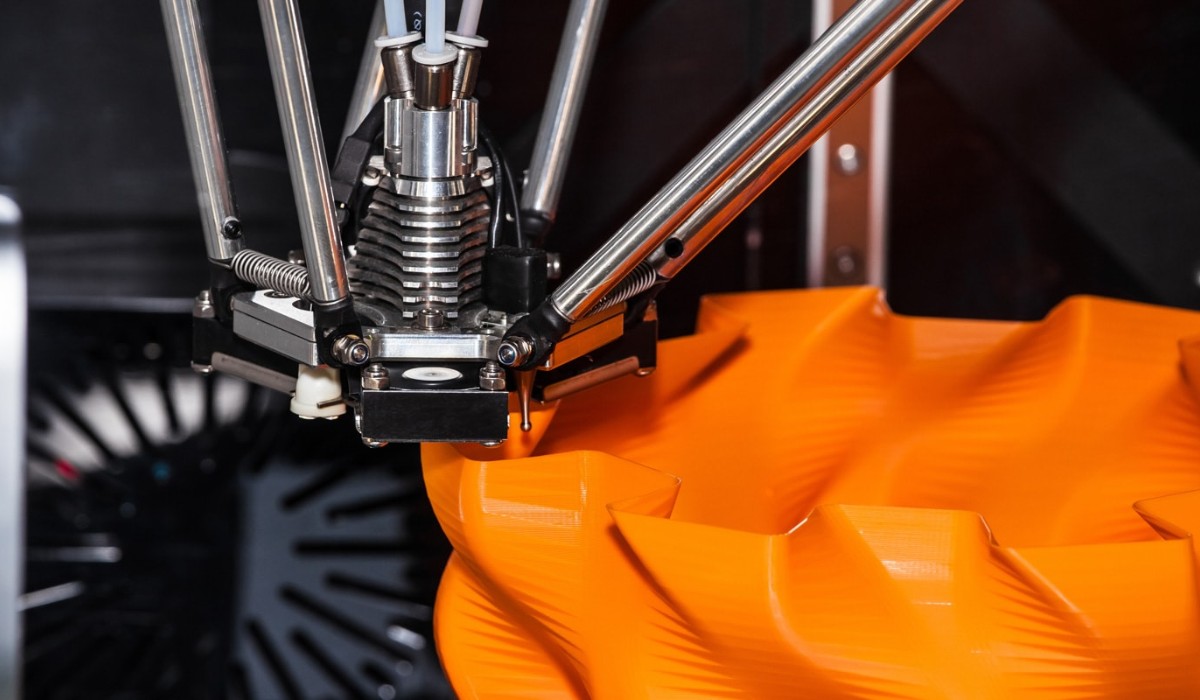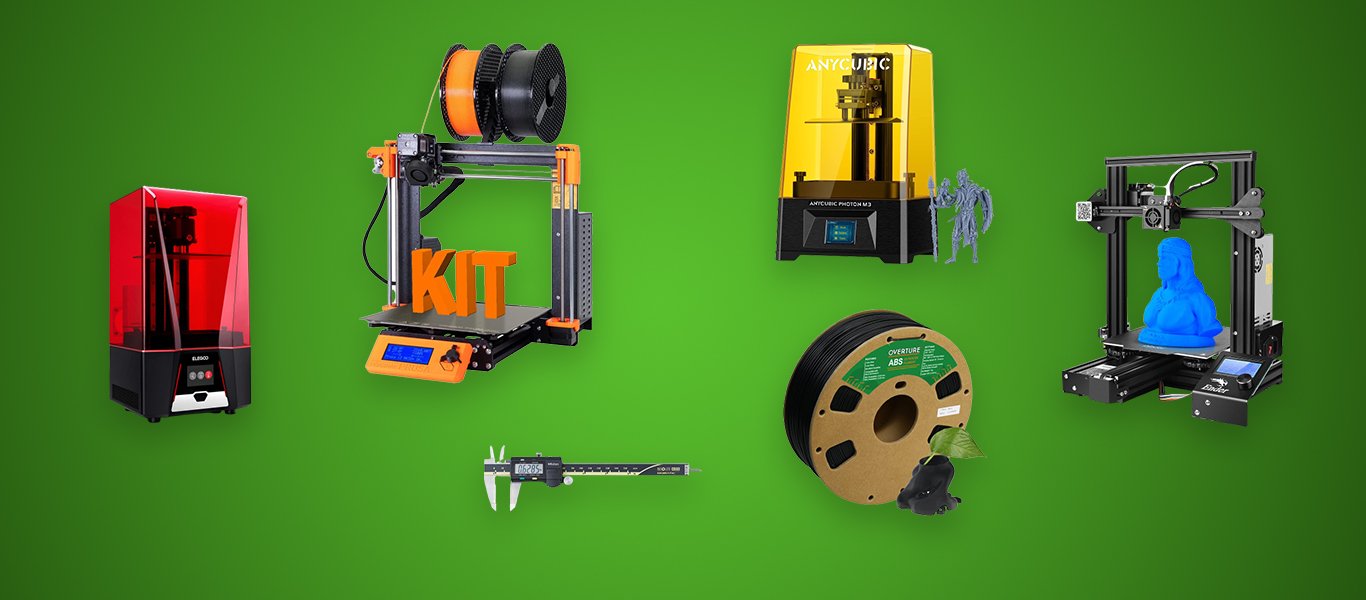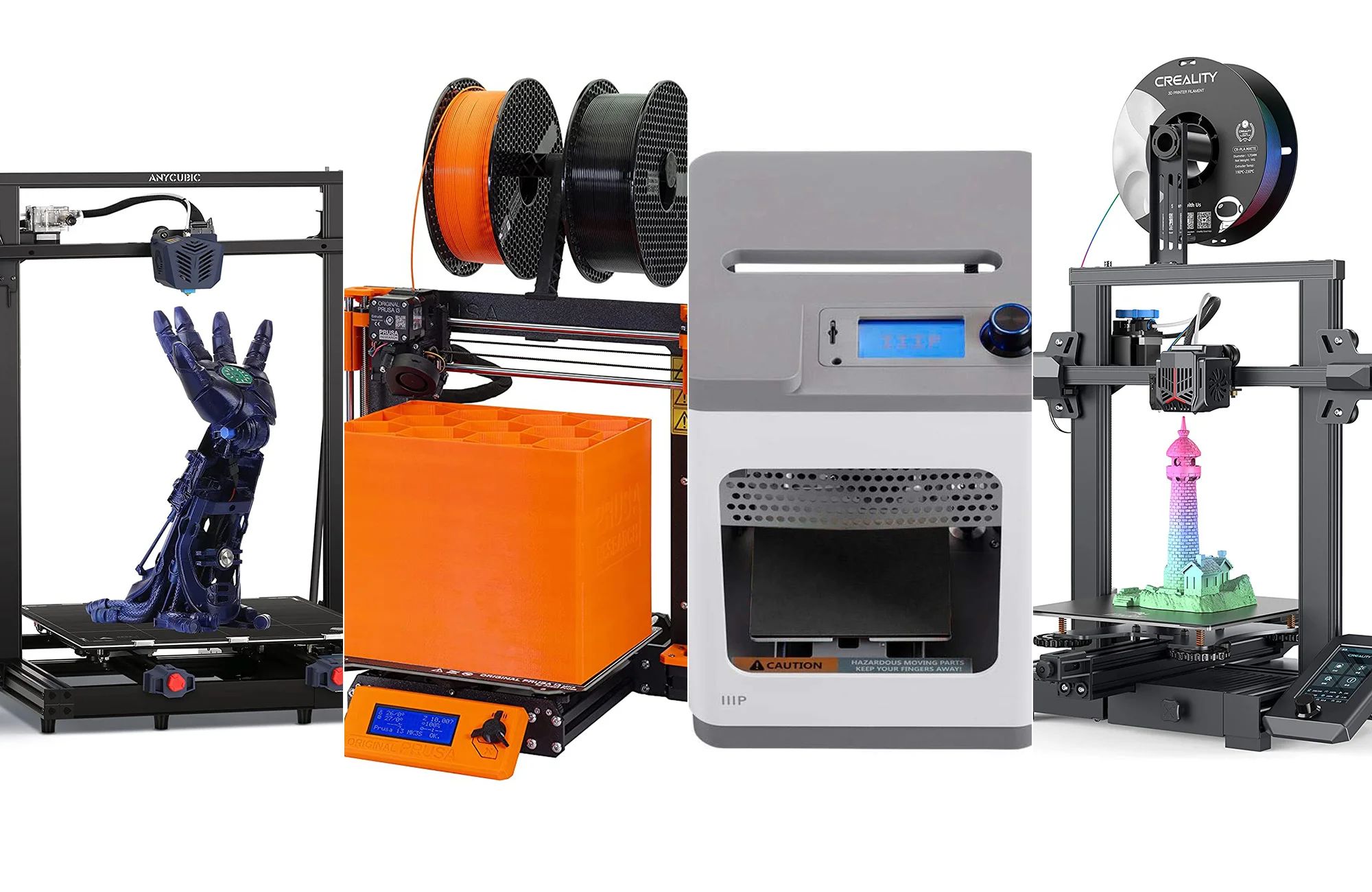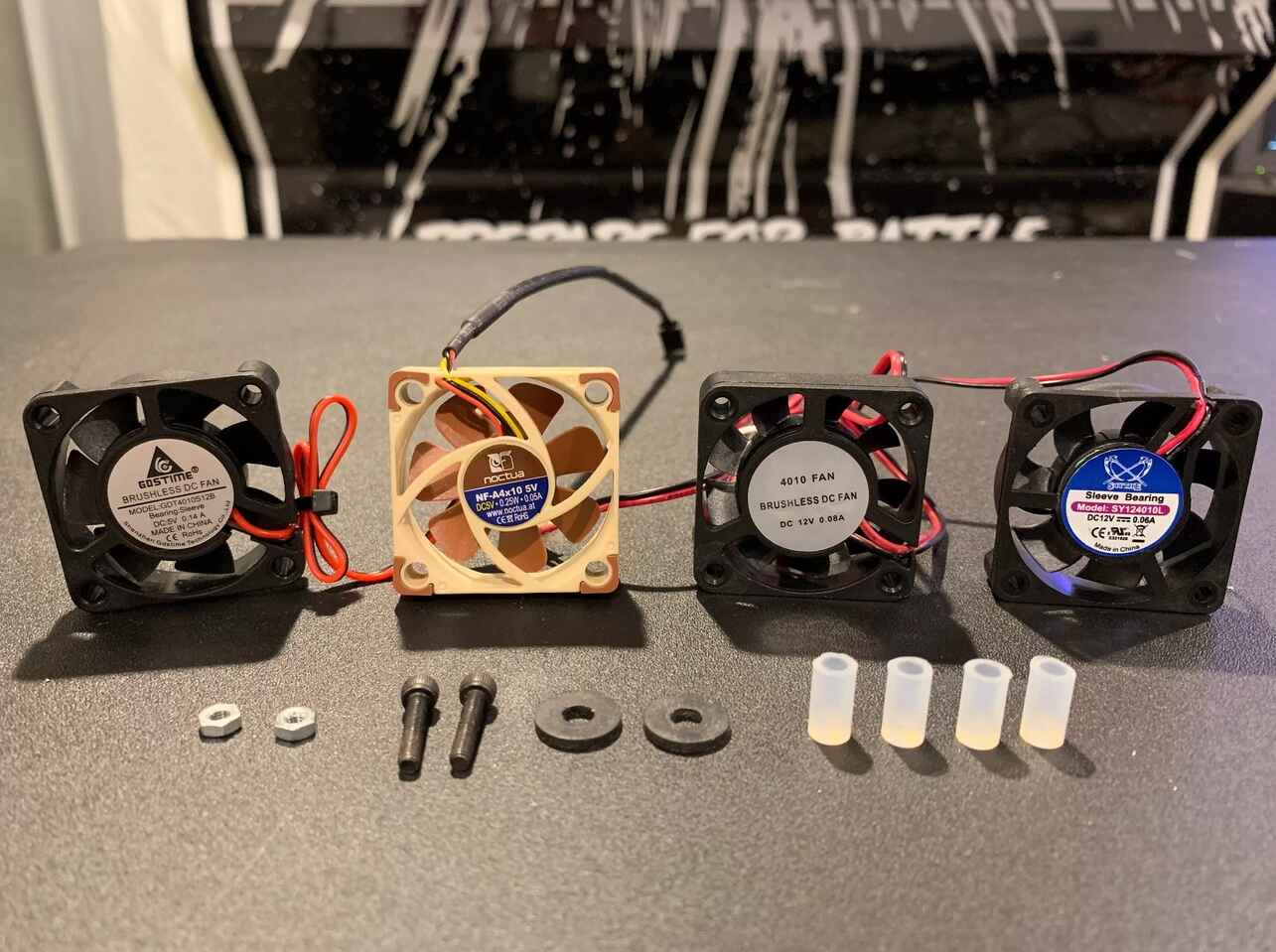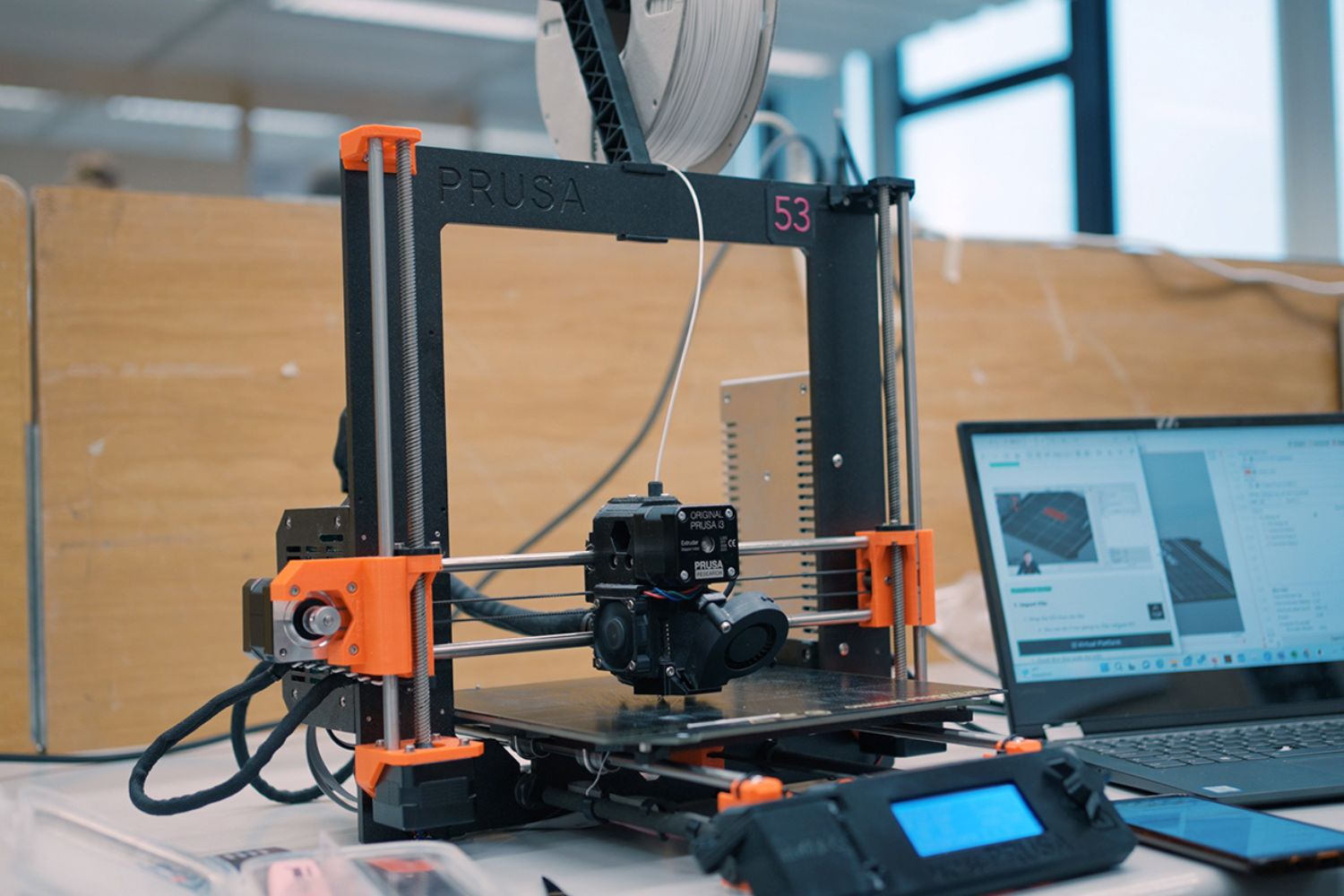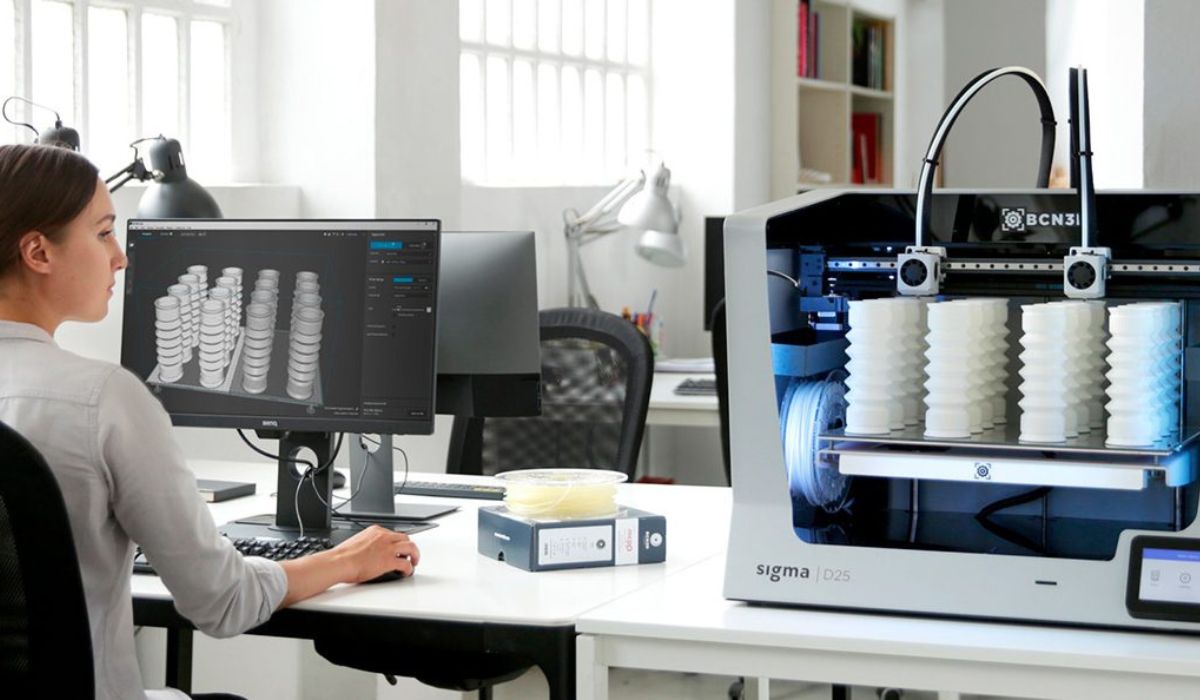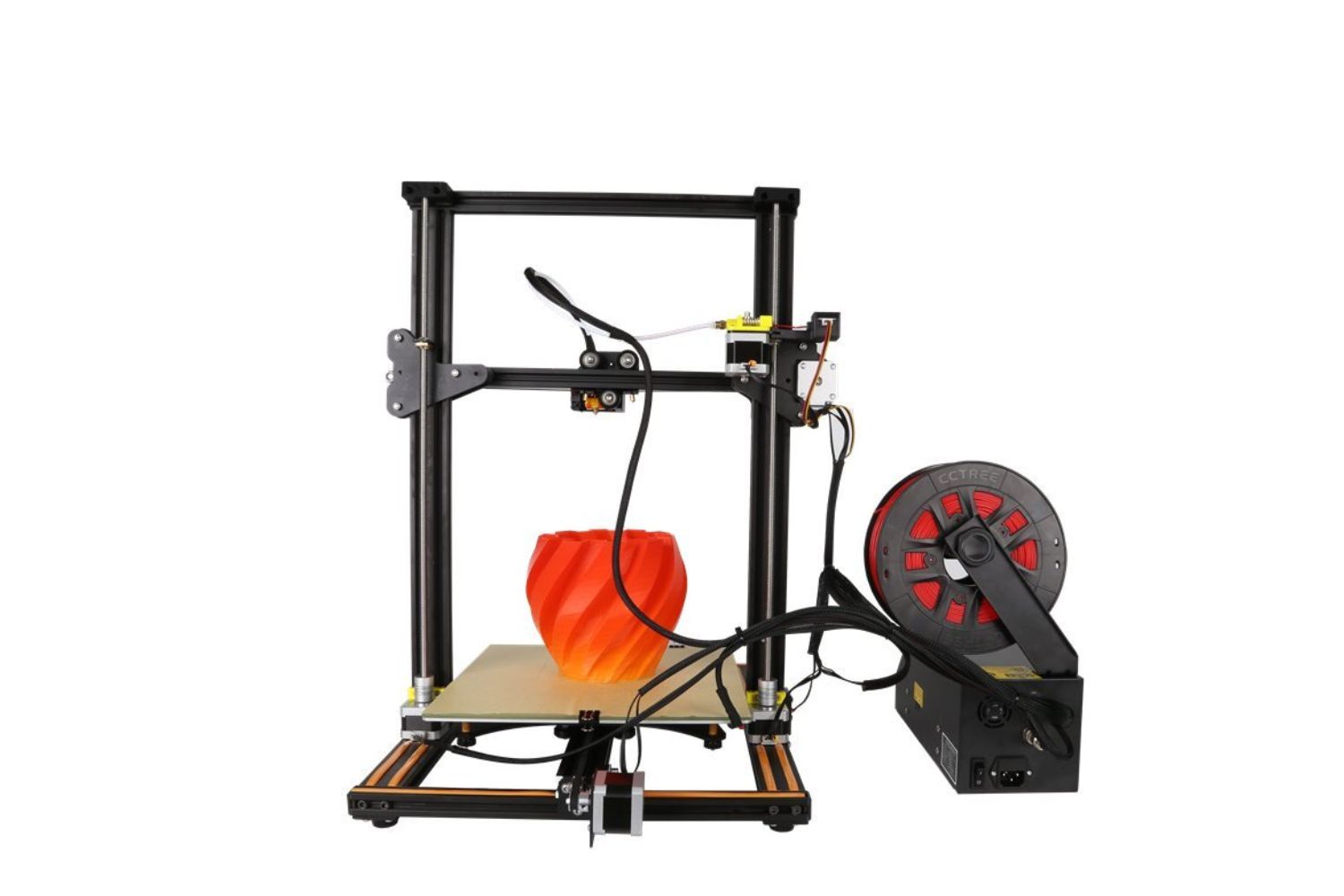Introduction
Welcome to the world of 3D printing, where creativity knows no bounds. Whether you’re a hobbyist, engineer, or entrepreneur, 3D printing technology has revolutionized the way we bring our ideas to life. But have you ever wondered how much power these incredible machines consume?
In this article, we’ll delve into the world of 3D printer power consumption and explore the factors that affect it. From understanding the basics of power consumption to calculating the energy usage of different printers, we’ll cover it all. So, if you’re curious to learn just how much power your 3D printer consumes, keep reading.
Power consumption refers to the amount of energy a device, such as a 3D printer, utilizes during operation. It is an essential factor to consider not only for budgeting your electricity usage but also for the environmental impact of your printing activities. By understanding the power consumption of your 3D printer, you can make informed decisions to optimize energy usage and mitigate any negative effects on your electricity bills.
Several factors influence the power consumption of a 3D printer. These include the type of printer, printing materials used, print settings, and the complexity of the design being printed. Each of these elements plays a role in determining how much power your printer will consume during a given printing job.
Calculating the power consumption of a 3D printer can be a bit tricky since it varies from one model to another. Manufacturers often provide specifications regarding the power consumption of their printers, but these should be used as a general guide rather than an exact value. To get a more accurate estimation, you will need to measure the electricity usage of your printer using a power meter or by consulting the printer’s documentation.
Understanding Power Consumption
Power consumption is an important aspect to consider when operating a 3D printer. By understanding how power is consumed, you can optimize your printing process and manage energy usage efficiently.
The power consumption of a 3D printer is primarily determined by its components and the tasks it performs during the printing process. The main components that contribute to power usage include the extruder (hot end), heated bed, motors, fans, and display screen.
The extruder, responsible for melting and pushing the filament, typically requires a significant amount of power compared to other components. The heated bed, which maintains the temperature of the build platform, also consumes a considerable amount of energy.
The motors in a 3D printer are responsible for moving the X, Y, and Z axes, as well as the filament feeder. These motors consume power while in operation, with larger printers generally requiring more powerful motors and therefore consuming more energy.
Fans play a crucial role in cooling the printer’s components, ensuring optimal performance and preventing overheating. While they may not consume as much power as the extruder or heated bed, they still contribute to the overall power consumption of the printer.
The display screen, although small, also has a minor impact on power consumption. This component typically uses backlighting or LED technology, consuming a small amount of energy.
It’s important to note that power consumption can vary depending on the print settings and the complexity of the design being printed. Higher print speeds, larger print volumes, and intricate designs may require more power to complete the job.
Another significant factor affecting power consumption is the printing materials used. Different types of filaments, such as PLA, ABS, or nylon, have varying melting temperatures. Therefore, the power needed to reach and maintain the required temperature can differ, affecting the overall power consumption.
In addition to the printer components and settings, the duration of the print job also impacts power consumption. The longer the print job takes, the more energy will be consumed. Therefore, optimizing print settings and reducing print times can effectively minimize power usage.
Understanding the power consumption of your 3D printer is essential for managing energy usage efficiently. By taking into account the various components, print settings, and materials, you can make informed decisions to reduce power consumption and minimize the impact on your electricity bills.
Factors Affecting Power Usage
Several factors can influence the power usage of a 3D printer. Understanding these factors is essential for optimizing energy consumption and making informed decisions during the printing process.
1. Print Settings: The settings you choose for your 3D print job can significantly impact power usage. Higher print speeds and layer heights generally require more power, as the printer needs to work faster to complete the job. Adjusting print settings to strike a balance between print quality and power consumption can help reduce energy usage.
2. Print Volume: The size and complexity of the object being printed can also affect power usage. Larger prints or designs with intricate details may require more power to complete, as the printer has to work for an extended period. Breaking down larger prints into multiple smaller ones or simplifying intricate designs can help minimize power consumption.
3. Print Material: The type of filament used for printing can impact power usage. Different materials have different melting temperatures, and the printer may need to adjust its energy consumption accordingly. Some materials may require more energy to heat up and maintain the desired temperature, contributing to increased power usage.
4. Print Temperature: The temperature settings for the extruder and heated bed can also influence power consumption. Higher temperatures may result in increased power usage as the printer works to maintain the desired temperature throughout the printing process. Experimenting with temperature settings and finding the optimal balance can help minimize energy usage.
5. Idle Time: The time the printer spends idle between print jobs can also contribute to power usage. Some printers may continue to consume energy even when not actively printing. Properly powering off the printer or utilizing power-saving features during idle times can help conserve energy.
6. Environmental Conditions: The ambient temperature can indirectly affect power usage. If the environment is too cold, the printer may need to consume more power to maintain the necessary temperatures for proper printing. On the other hand, if the environment is too hot, the printer’s cooling system may work harder, resulting in increased power consumption.
By taking these factors into account, you can optimize power usage during your 3D printing activities. Experimenting with different settings, materials, and print volumes can help minimize energy consumption while still achieving the desired print quality.
Calculating Power Consumption
Calculating the power consumption of a 3D printer can help you understand how much energy it consumes and make informed decisions about energy usage. While manufacturers provide specifications, it’s important to measure the actual power usage of your printer for more accurate results.
To calculate the power consumption of your 3D printer, you will need a power meter or watt meter. These devices measure the amount of electricity used by your printer during the printing process. Simply plug the printer into the meter, then connect the meter to a power outlet.
Once the printer is connected to the power meter, you can start a print job and monitor the power consumption in real-time. The meter will display the current power usage, typically measured in watts (W), and may also provide information on other parameters such as voltage (V) and current (A).
Keep in mind that power consumption can vary during different stages of the print job. The initial heating of the extruder and heated bed may require more power, while subsequent printing stages may consume less energy. Monitoring the power usage throughout the entire print job will provide a more accurate estimate of the overall power consumption.
To calculate the total energy consumed by your 3D printer, you can multiply the average power consumption by the duration of the print job. For example, if your printer consumes an average of 100 watts during a 2-hour print job, the total energy consumed would be 200 watt-hours (Wh).
It’s also worth noting that power consumption can vary between different models of 3D printers. If you don’t have a power meter, you can consult the manufacturer’s specifications, which usually provide an estimate of power consumption. However, it’s important to treat these figures as general guidelines rather than exact values, as the actual power usage may differ based on your specific settings and conditions.
By measuring and calculating the power consumption of your 3D printer, you can gain valuable insights into its energy usage and make informed decisions to optimize power consumption. This knowledge allows you to balance print quality and energy efficiency, ensuring a more sustainable and cost-effective printing process.
Power Usage of Different 3D Printers
The power consumption of 3D printers can vary significantly depending on the model and manufacturer. It’s important to consider this factor when choosing a printer, especially if you have specific energy efficiency requirements or limitations. Let’s explore the power usage of different types of 3D printers.
1. Entry-Level FDM Printers: Entry-level Fused Deposition Modeling (FDM) printers are typically more affordable and widely available. These printers often have lower power consumption compared to their high-end counterparts. On average, entry-level FDM printers consume around 50-100 watts of power during operation. However, the actual power usage can vary depending on factors like print settings, filament type, and size of the print job.
2. Industrial FDM Printers: Industrial-grade FDM printers are designed for higher volume and more demanding applications. These printers generally have sturdier construction and larger print beds, which may contribute to higher power consumption. On average, industrial FDM printers consume between 500-1500 watts of power during operation. This higher power usage is necessary to accommodate the larger build volume and heavier-duty components.
3. SLA/DLP Printers: Stereolithography (SLA) and Digital Light Processing (DLP) printers use different technology than FDM printers. These printers typically have lower power consumption compared to FDM printers. On average, SLA/DLP printers consume around 30-60 watts of power during operation. The lower power usage can be attributed to the curing process using UV light rather than heating and extruding filament.
4. Resin Printers: Resin-based 3D printers, such as Digital Light Processing (DLP) or LCD printers, are known for their high-resolution and intricate prints. These printers require additional energy to power the UV light source responsible for curing the photopolymer resin. On average, resin printers consume between 50-300 watts of power during operation. The actual power usage can vary based on factors such as the size of the print job and the complexity of the design.
5. Powders/Binder Jetting Printers: Powders and binder jetting printers use a combination of powdered materials and binding agents to create solid objects layer by layer. These printers typically require more power due to the complex process involved. On average, powders/binder jetting printers consume between 500-1500 watts of power during operation. The power consumption is necessary to heat and fuse the powdered materials together.
These power consumption ranges are provided as general estimates and can vary depending on a variety of factors. It’s important to refer to the manufacturer’s specifications for the specific printer you are considering to get accurate information on its power usage.
When purchasing a 3D printer, it’s crucial to balance power consumption with other factors such as print quality, functionality, and cost. By understanding the power usage of different printer types, you can make an informed decision that aligns with your specific requirements and constraints.
Energy Saving Tips for 3D Printing
While 3D printing offers endless possibilities, it’s important to be mindful of energy consumption to minimize environmental impact and reduce electricity costs. Here are some energy-saving tips to consider when operating your 3D printer:
1. Optimize Print Settings: Adjusting print settings can significantly impact power usage. Consider reducing the print speed or layer height to consume less energy. However, be cautious not to compromise print quality.
2. Print Smarter: Consolidate multiple small prints into a single print job whenever possible. This reduces the time the printer spends idle between prints, resulting in less overall energy consumption.
3. Utilize Power-Saving Features: Many 3D printers have built-in power-saving features, such as automatic shutdown or the ability to enter standby mode after a period of inactivity. Enable these features to reduce energy consumption during idle times.
4. Opt for Energy-Efficient Printers: Consider investing in printers that are specifically designed to be energy-efficient. Look for models with high energy efficiency ratings or certifications that indicate they have been tested for low power consumption.
5. Reduce Print Bed Heating Time: Preheating the print bed can consume a significant amount of energy. Consider reducing the preheating time or only heating the bed when necessary for certain prints.
6. Proper Ventilation: Ensure that your printer is placed in a well-ventilated area to prevent overheating. Excessive heat can cause the printer’s cooling system to work harder, consuming more energy. Avoid placing the printer near other heat-generating devices or direct sources of sunlight.
7. Optimize Design: When creating 3D models, you can optimize the design to reduce the amount of filament and printing time required. This not only saves material but also reduces energy consumption during the print process.
8. Choose Energy-Efficient Filaments: Some types of printing materials may require less energy to heat and extrude. Consider using filaments that are known to have lower melting temperatures or are designed to be energy-efficient.
9. Monitor and Adjust: Monitor your printer’s power consumption using a watt meter or power monitor. Use this data to optimize print settings and identify areas where you can further reduce energy usage.
10. Power Off When Not in Use: When your printer is not in use, power it off completely. This helps eliminate any standby power consumption and ensures that no unnecessary energy is being used.
By implementing these energy-saving tips, you can reduce the environmental impact of your 3D printing activities while also saving on electricity costs. Remember that small changes can make a big difference over time.
Conclusion
3D printing has opened up a world of creative and innovative possibilities. However, it’s important to be mindful of the power consumption of your 3D printer to minimize environmental impact and keep electricity costs in check. By understanding the factors that affect power usage, calculating energy consumption, and implementing energy-saving tips, you can make your 3D printing process more efficient and sustainable.
We explored the different components of a 3D printer that contribute to power consumption, such as the extruder, heated bed, motors, fans, and display screen. Factors like print settings, print volume, print material, print temperature, and idle time also play a role in determining power usage.
Calculating power consumption using a power meter or watt meter allows for accurate estimates specific to your printer. By multiplying the average power consumption by the duration of the print job, you can calculate the total energy consumed. This information helps you make informed decisions about energy efficiency and cost optimization.
Different types of 3D printers have varying power consumption ranges. Understanding these ranges can help you choose a printer that aligns with your energy efficiency requirements. Additionally, implementing energy-saving strategies like optimizing print settings, utilizing power-saving features, and designing for efficiency can further reduce energy usage.
Ultimately, by minimizing power consumption, 3D printing enthusiasts can reduce their carbon footprint and contribute to a more sustainable future. So, whether you’re a hobbyist, professional, or entrepreneur, integrating energy-saving practices into your 3D printing workflow is essential for a greener and more cost-effective operation.
Embracing the power of 3D printing while being mindful of its energy consumption allows us to tap into the limitless potential of this technology responsibly. So, let’s strive for efficient 3D printing and take small steps towards a more sustainable and eco-friendly future.







